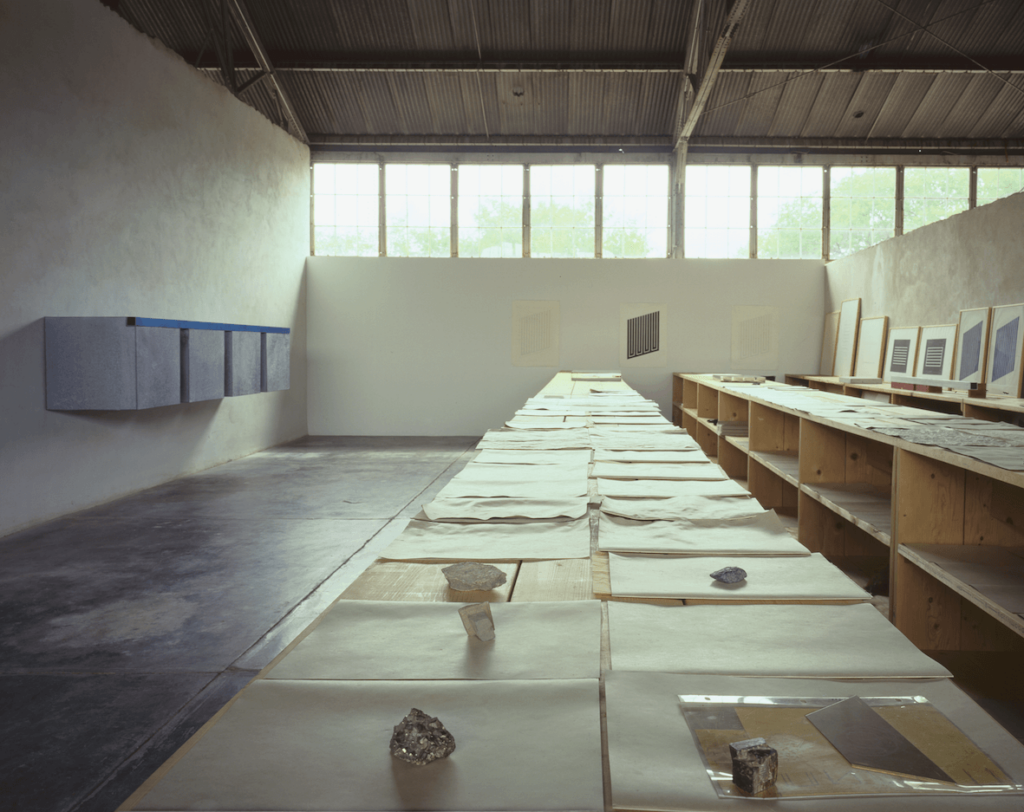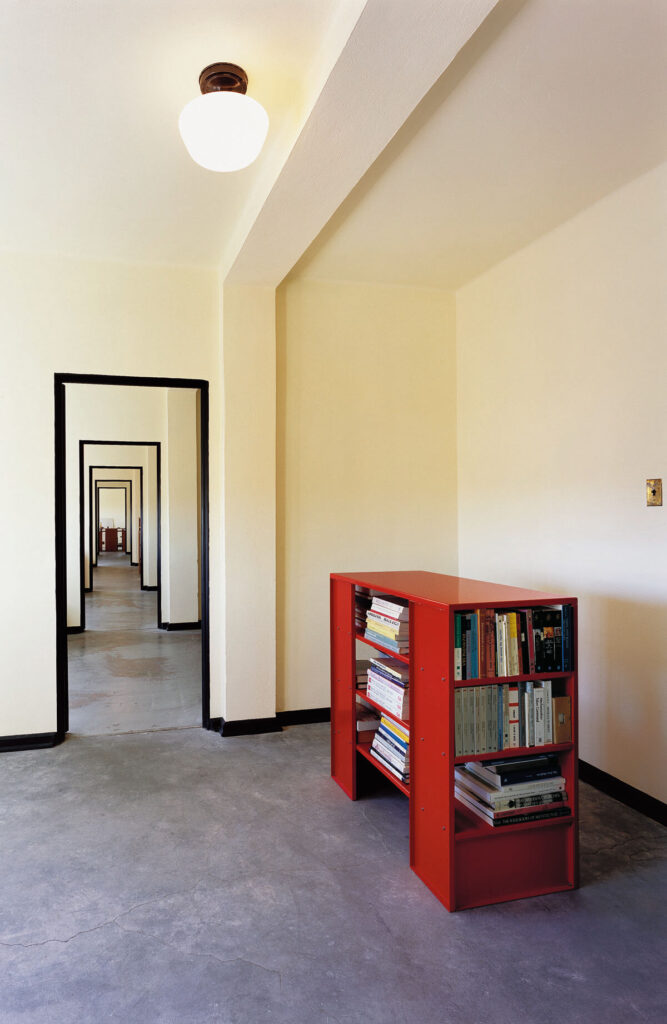

The development and production of Donald Judd’s furniture resulted partially from necessity, as he wrote in 1993: “There was no furniture and none to be bought, either old, since the town [Marfa, Texas] had not shrunk or changed much since its beginning in 1883, or new, since the few stores sold only fake antiques or tubular kitchen furniture with plastic surfaces printed with inane geometric patterns or flowers.”
Judd’s solution was to design very simple beds out of one-by-twelves, a cut of wood that with limited manipulation yielded simple, elegant, and functional construction. Shortly after, he began to design desks, shelves, tables, and chairs using this same standard unit of lumber. Carpenters from Marfa, namely the brothers Celedonio and Alfredo Mediano and later Ramon Nuñez and his team, constructed Judd’s furniture designs. At this time, Judd’s primary design concerns were the quality of wood and the reasonableness of forms as articulated by the standardization of cuts of one-by-twelves.

To articulate his designs, Judd made hundreds of drawings like the one above, a pencil drawing of shelves from January 1981. Judd designed similar shelves for his Print Studio at The Block out of pine two-by-twelves, with the same exterior dimensions and the same distance from the floor to the first shelf.

The realized design included an additional shelf, which bisects the unit between the lower shelf and the top, and a brace board in the upper half of the unit. Judd used these shelves to display prints and drawings in his Print Studio until 1990 when he then moved them to his newly purchased Art Studio on Oak Street in Marfa.

In 1990, Judd converted a 6,000 square foot former Safeway grocery store into his Art Studio, installing large tables and shelves to review samples and various works – completed, incomplete and rejected. In the new space, the units found new use. As seen in this picture, the shelves held tools, works-in-edition and multi-colored pieces. As was the case in the former Print Studio, the shelves allowed everything to be clearly viewed. Not hidden in cabinets or containers, Judd’s shelves, similarly to the large tables at the Art Studio, allow for objects and works to exist on an open plane, in full view. Although distinct in scale and material, Judd designed other free-standing shelves, such as the metal bookshelf on the second floor of his Architecture Studio in the former Marfa National Bank Building.

This shelf, fabricated by Lehni AG in Switzerland, has shelves on all four sides, as distinct from traditional bookshelves which run along the plane of the wall. Industrially fabricated, Judd’s metal furniture is crafted with considerable handwork in the unique bending of the edges of each piece, which are stamped and numbered for authenticity. Although we see this example in red, all of Judd’s designs in metal are available in 21 RAL colors, anodized aluminum, copper, and brass. For more information on Donald Judd Furniture, please visit the Donald Judd Furniture website.
Images: top: unknown; second: Adam Bartos; third: unknown; fourth: Florian Holzherr